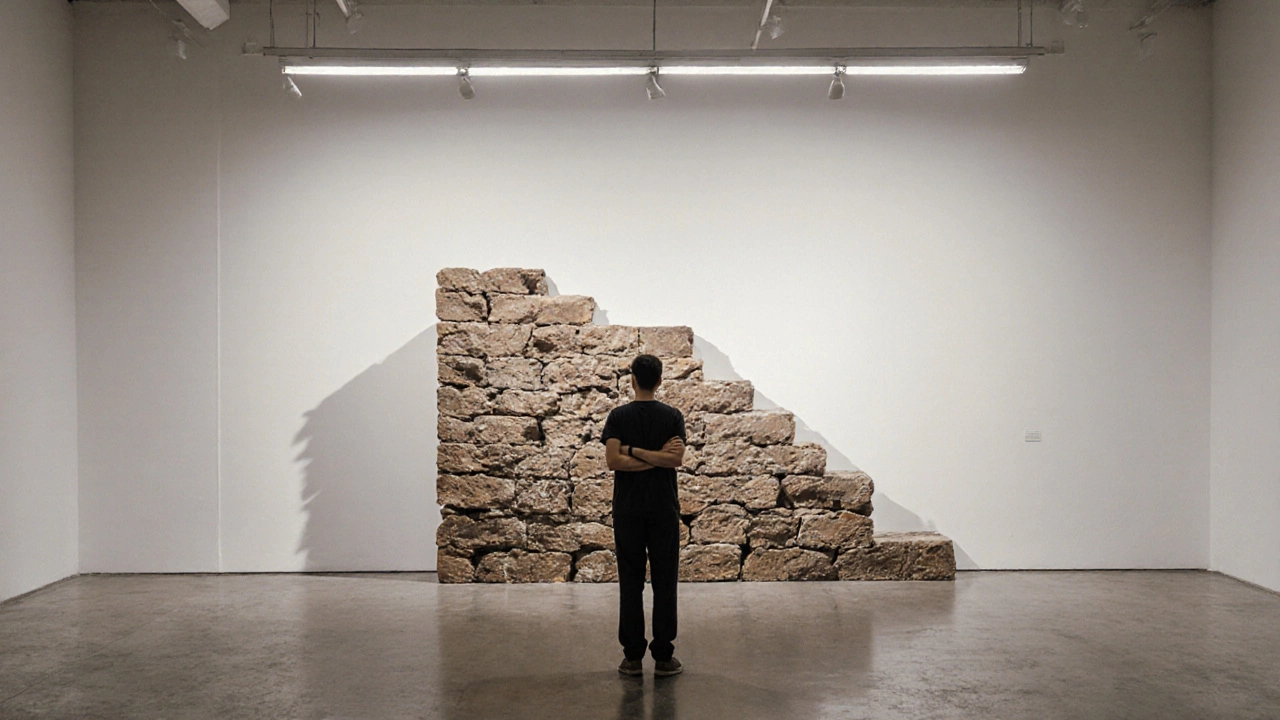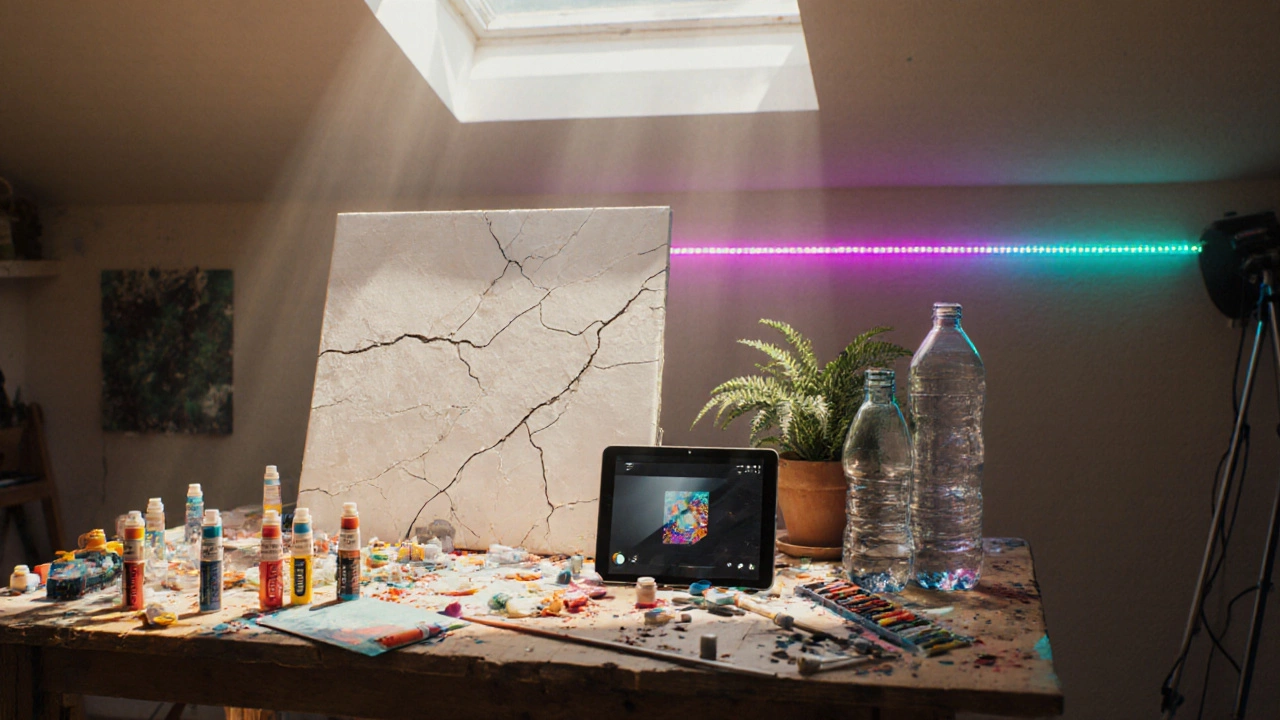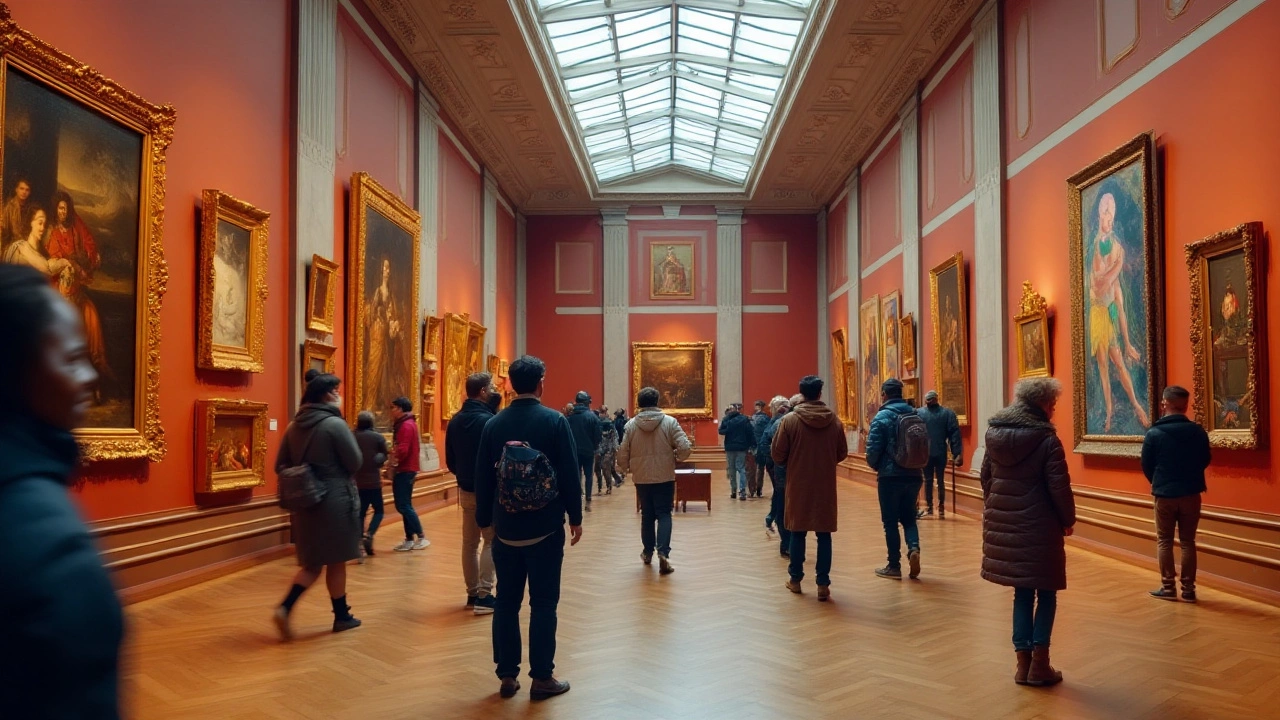Contemporary Style: What It Is and Why It Matters
When you hear "contemporary style" you probably picture bold colors, mixed media, or digital experiments. But the term is more than a buzzword. It’s the way artists today react to the world around them, using new tools and old ideas in fresh combos. If you want to know whether a piece fits this vibe, start by looking at the feeling it gives you – does it make you think, question, or feel something new?
Key Elements of Contemporary Style
First up, materials. Artists aren’t limited to oil or marble any more. They blend acrylics with 3D printing, layer graffiti on canvas, or use AI to generate patterns. Second, subject matter. You’ll see social issues, technology, and identity explored side by side. Third, process. The making is often as important as the final work – think of video docs, live performances, or interactive installations. Our post “Most Modern Art Styles” digs deeper into these trends, showing how digital, AI, and NFT art are reshaping what we call contemporary.
How to Find Contemporary Style in Art Today
Look for galleries that host rotating shows focused on “new media” or “current issues.” Check out street art festivals – many pieces blur the line between public mural and gallery work. Online, platforms that feature emerging artists often tag their work with "contemporary" for a reason. In our article “Modern Art vs Contemporary Art: Key Differences Explained Simply,” we break down where classic modern movements end and today’s experimental approaches begin.
Another handy tip: ask yourself if the artwork encourages conversation. Contemporary creators love to provoke thought, whether it’s about climate change, digital privacy, or personal identity. The post “Contemporary Arts: Essential Elements Explained for Modern Creatives” lists eight basics to watch for, like concept‑driven content and cross‑disciplinary collaboration.
If you’re an artist looking to join the scene, start simple. Pick a familiar medium and add one unexpected element – a scanned photograph, a sound clip, or a piece of recycled material. Then share the process on social media or a blog. Our guide “How to Identify Genuine Giclee Prints” shows why documentation matters, and the same logic applies when you want proof of originality in contemporary work.
Collectors also benefit from knowing the signs of true contemporary value. Look for artist statements, exhibition histories, and provenance that tie a piece to recent trends. A signed print isn’t automatically valuable, but when it’s part of a limited run tied to a current concept, it can gain worth fast. The article “Are Signed Art Prints Worth Anything?” walks you through spotting real value.
Finally, stay curious. Attend a local art fair, read a few of our tag‑related posts, and ask questions at openings. The more you engage, the clearer contemporary style becomes – not as a fixed rule, but as a lively conversation between artists, viewers, and the world they share.

6 Nov 2025
Contemporary art isn't about style or technique - it's about asking urgent questions. From AI-generated images to recycled plastic sculptures, today's art reflects our world - messy, digital, and deeply human.
Continue reading...

13 Oct 2025
Discover what defines contemporary style in art-key visuals, major movements, top artists, and how to spot or create it. A practical guide for art lovers.
Continue reading...

10 Oct 2024
Exploring the distinction between classic and contemporary art styles reveals an insightful journey through time and creativity. Classic art often invokes traditional techniques and themes, whereas contemporary style embraces innovation and the evolution of thought. This article delves into the defining characteristics of each style, their historical contexts, and how they continue to influence the art world today. Tips for appreciating and identifying these styles are also shared, enriching one’s art appreciation journey.
Continue reading...


